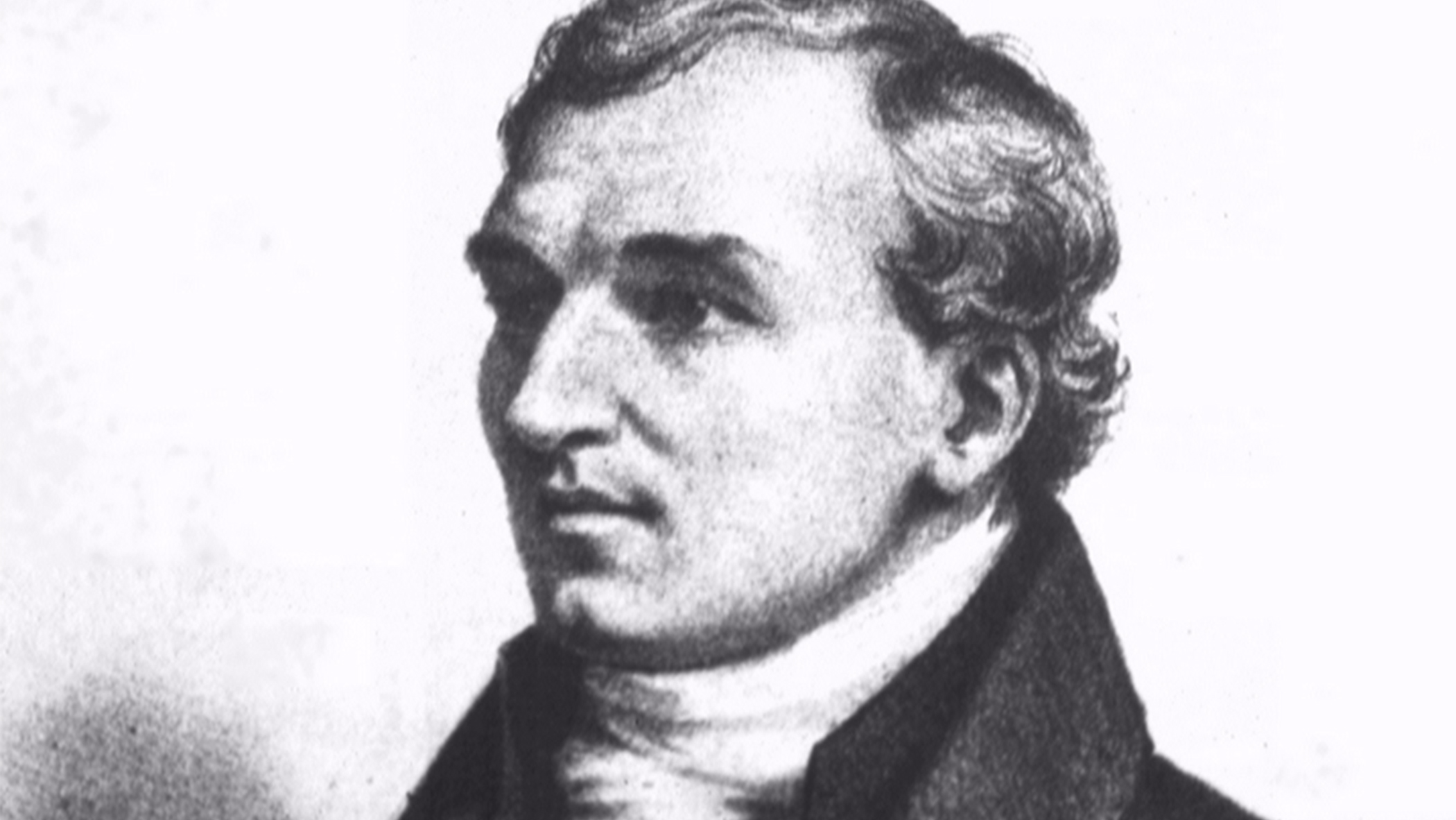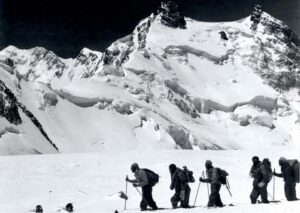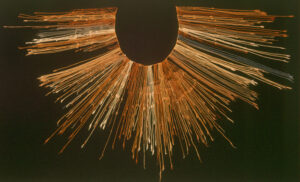If you’ve bought a Christmas tree in the last hundred years, there’s an even chance it’s some varietal of Douglas fir. For that reason alone, it’s worth remembering David Douglas, the globetrotting Scot who first brought this classic North American tree to the horticulture-hungry attention of European audiences in the early 1800s.
Don’t get the idea that Douglas was a stuffy, bookish collector more interested in pressing leaves than exploring far-flung locales. With the business of discovering new plants operating at full steam during the pre-Victorian era, Douglas embarked on a series of groundbreaking North American expeditions over the course of his tragically short life.
He even managed to notch an early — possibly the first — North American mountaineering objective along the way. The Scot survived a capsized canoe and many other close calls before introducing 240 new plant species to Europe.
He met his end in Hawaii at the age of 35. And like all the best explorer stories, even Douglas’ death is of note, coming as it did at the hands (hooves) of a wild bull at the bottom of a pit trap. How did this botanical adventurer end up at the bottom of that fateful pit? It’s up for debate. But first, a glance back at the fruitful life of David Douglas.
Stones and leaves
Douglas was born into a solidly middle-class family in the exquisitely Scottish-named hamlet of Scone, Perthshire. Douglas’s father was a stonemason, but young David quickly developed an interest in all growing things. A seven-year apprenticeship to the head gardener of Scone Palace swiftly gave way to formal studies at the College of Perth. Douglas supplemented his single semester of formal education with practical work experience and attendance at lectures put on by Glasgow University.
The mentors in Douglas’ orbit recognized a talent. It wasn’t long before they recommended him to London’s Royal Horticultural Society (RHS). At the age of 24, Douglas boarded a ship bound for the east coast of North America.
That first trip was far from wild, as Douglas was based out of the already-bustling metropolises like New York City and Philadelphia. His mission? Explore the vast array of domestic and wild plants enjoyed by the residents of the growing American northeast. He tasted 24 varieties of peaches on Long Island, tromped around the Jersey pine barrens in search of lady slippers, and made the first of his many connections to the Lewis and Clark expedition by preserving an offshoot of an Oregon grape plant first collected by the Voyage of Discovery two decades earlier.
A quick trip back to London with his notes and samples proved to the RHS that Douglas had the right stuff. Before long, he shipped off to North America’s rugged and far-less-settled Northwest coast. Here, he truly began to make his mark.
A narrow escape
The year 1824 found our roving, mostly self-taught botanist embarking on a three-year expedition through the Pacific Northwest. Under a mandate from the RHS to seek out flowering and fruiting plants, Douglas was nevertheless captivated by the dense stands of huge conifers along the banks of the Columbia River.
This was the region that netted Douglas seeds, needles, and dried branches of some of North America’s most iconic trees. Thus, he continued the botanical work begun by Lewis and Clark in the area. Douglas traveled over 3,000 kilometers by birchbark canoe in his first collecting season alone.
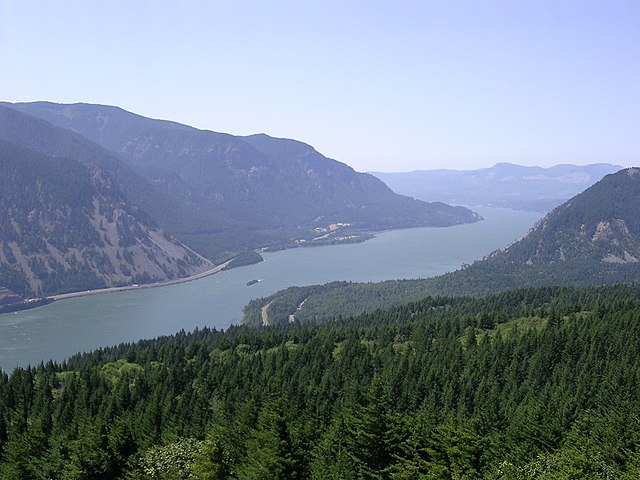
The Columbia River Gorge, a waterway that functioned as a highway for David Douglas during his explorations. Photo: Wikimedia Commons
Thanks to Douglas’ efforts over the next three years, the Sitka spruce, Western white pine, ponderosa pine, lodgepole pine, grand fir, noble fir, sugar pine, and what would come to be called the Douglas fir all entered cultivation. Recalled to London in 1826, Douglas instead chose to spend another year in exploration before traveling up the Columbia, over the Rockies, and home to England via Hudson Bay in 1827. But not without some good old-fashioned adventuring first.
Douglas’s fascination with sugar pines during his second expedition almost killed him. He’d heard of the immense and stately conifer (sources aren’t sure from where) and promptly set out in search of one. In a bit of a dramatic irony that came up again at the end of his life, he managed to tumble into a ravine but escaped without serious injury — this time.
Sugar pine hazards
Upon finally finding a sugar pine, he used a firearm to shoot down three of the tree’s gigantic cones, an act which attracted the attention of a band of native people, who weren’t happy to see him. According to Douglas’ journals, the men were in war paint and looking for trouble.
Resorting to the thankfully shared vernacular of Plains Sign Language, Douglas offered to trade some tobacco in exchange for more sugar pine cones. It should be noted that Douglas was wisely hiding behind a gigantic downed sugar pine, with his weapons laid out in easy reach across the trunk, while conducting these delicate negotiations. While his new friends were off searching, Douglas scampered to the relative safety of his canoe and moved on.

Sugar pines are large, magnificent trees with large cones. Green cones can weigh in excess of 2kg, so try not to get bonked on the head by one. Honestly, we’re shocked that didn’t happen to Douglas. Photo: Wikimedia Commons
Relative is the operative word. A later encounter with the region’s famously feisty whitewater resulted in the loss of all his collected samples to date — with the exception of those three precious cones. Also lost in the froth were his rifle, his journals, and all his supplies.
A first ascent?
It was also during this period that Douglas made the first European ascent of the 2,791m Mount Brown in what is now British Columbia. So far as anyone knows, it’s as high as any European had been on the North American continent at the time, leading some of Douglas’ many fans to consider him North America’s first European mountaineer.
That nothing terrible happened to him on his ascent is noteworthy. According to lewis-clark.org, it was during this period that Douglas also fell on a nail that “penetrated his leg under his kneecap.”
Ouch, and also — are we sensing that this great explorer might be slightly accident-prone? Just you wait.
Hawaii and the mystery of the trampling bull
Like all the best explorers, Douglas rankled in the comforts of London after his 1824-27 expedition, and by 1830 he was back in North America. An October letter to his mentor William Jackson Hooker noted that he’d be shortly sending a package of six conifer seeds — one of which was for the Douglas fir.
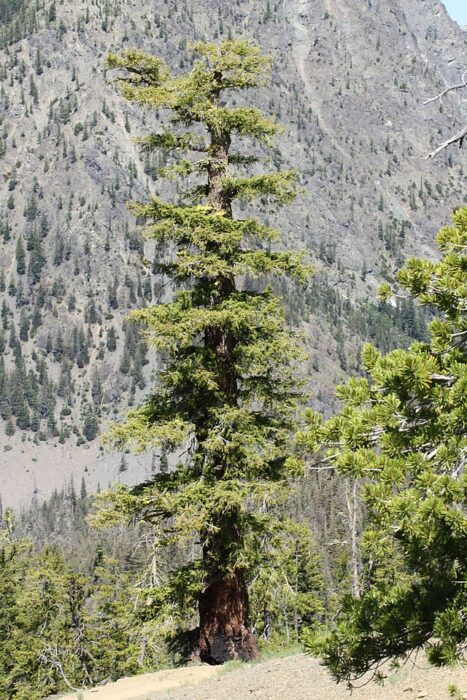
Douglas firs are stately, noble-looking trees. Photo: Wikimedia Commons
Douglas was always more interested in exploring and collecting than writing — the only one of his finds he formally described for academic journals was the sugar pine. Perhaps he felt his multiple brushes with death in pursuit of those samples justified a little desk work.
In any case, by 1834, he was climbing the steep volcanic flanks of Hawaii in search of new finds. And it’s here that the man’s accident-prone field work finally caught up to him. Details are scarce, but what history knows is that David Douglas was found mauled to death by a bull at the bottom of a pit trap on a well-established trail. Douglas either fell right on the thing or — arguably worse — it fell on him.
How did Douglas end up in the pit to begin with? Perhaps it was his failing eyesight — he was blind in one eye at this point. Perhaps he was robbed and pushed in by an escaped convict named Edward Gurney, as explored in The Collector: David Douglas and the Natural History of the Northwest, by Jack Nisbet.
Or perhaps it was just the same bad luck that had plagued this otherwise gifted explorer throughout his career. No one will ever know.
A victim of science
A headstone erected at his burial site 22 years later reads, in part, that he “died a victim of science.” That’s a typically Victorian way of describing what must have been a particularly unpleasant death, and “he died doing what he loved” is cold comfort to the loved ones of explorers throughout the ages.
There’s no way around it — Douglas’ death at 35 was a shattering loss to the intertwined worlds of exploration and botany in an age known for a pantheon of explorer-intellectuals.
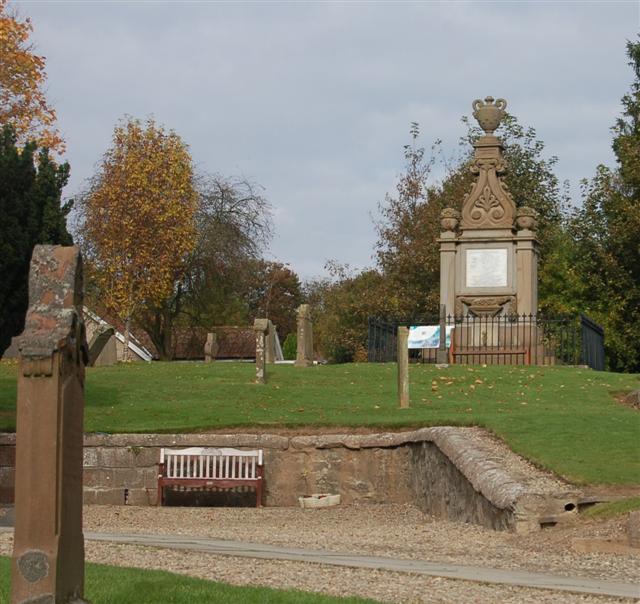
The David Douglas Memorial in the churchyard of the Scone Old Parish Church. Photo: Wikimedia Commons
But still, we can safely assume that up until that final moment, the man was having a blast. So the next time you visit a Christmas tree lot, spare a moment’s thought for David Douglas. Take home a Douglas fir and festoon it with trimmings of your choice.
Just watch out for nails.
